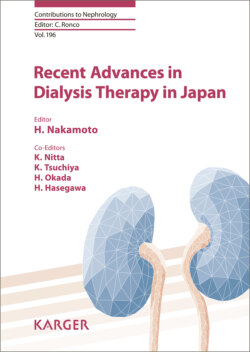Читать книгу Recent Advances in Dialysis Therapy in Japan - Группа авторов - Страница 12
На сайте Литреса книга снята с продажи.
Pathogenesis of EPS and the Innate Immune System
ОглавлениеAiming for further uptake of PD, the mechanism of peritoneal fibrosis (downstream) as a complication has been revealed to some extent, although no significant progress has been made in terms of how it is induced (upstream). Therefore, here we explore the risk of PD solution and infection, which stimulates inner immune system in the abdominal cavity, based on our own experiments [10]. A review on the mechanism of peritoneal fibrosis triggered by PD was released in 2016 [11]. So far, studies on EPS associated with PD focus mainly on the pathology of fibrosis, or so-called downstream. The cause of EPS is considered to be the repetition of infectious (bacteria or fungus) and/or aseptic (allergy) inflammation of peritoneum [12]. Eosinophilic peritonitis is categorized as aseptic inflammation, but evidence is still weak to regard it as an allergic reaction. Therefore, we propose a viewpoint that tissue invasion, caused by infection and/or nonspecific stimulation of PD solution, results in the generation of a danger signal, which activates eosinophils, leading to the pathogenesis of the innate immune system, which reacts in order to protect the body, and ends up in inducing fibrosis of the tissue. This is a totally new attempt. The authors have already confirmed the pathogenesis associated with allergies and eosinophil, and activation of eosinophil caused by the danger signal, which is a substance released when body tissues are damaged and which induces immune reaction [13, 14].
